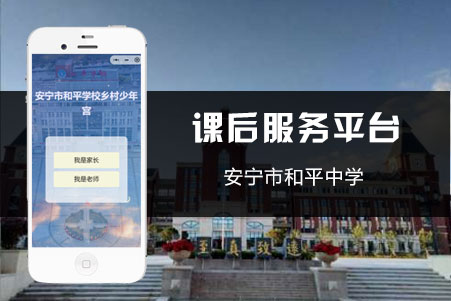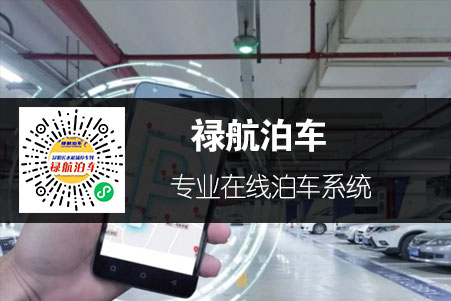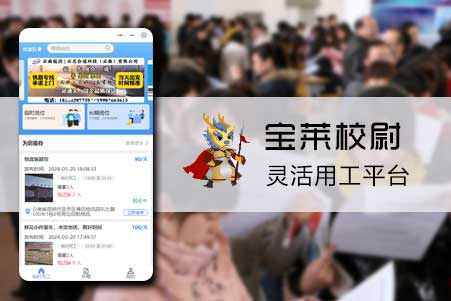微信小程序獲取關聯微信公衆号文章列表
發表時(shí)間:2020-11-6
發布人(rén):融晨科技
浏覽次數:184
微信小程序獲取關聯微信公衆号文章列表
首先應在(zài)公衆号裏面點擊“小程序管理”,關聯上(shàng)對應的(de)小程序,輸入小程序AppID綁定,到(dào)此綁定算是(shì)完成
接下來(lái)就(jiù)是(shì)要(yào / yāo)得到(dào)AppID和(hé / huò)AppSecret,這(zhè)個(gè)在(zài)小程序管理中即可查看
下一步就(jiù)是(shì)獲取access_token,這(zhè)個(gè)案例用的(de)是(shì)Java所寫
代碼如下:
private String getToken() throws MalformedURLException, IOException, ProtocolException {
grant_type=client_credential&appid=APPID&secret=APPSECRET
String path = " https://api.weixin.qq.com/cgi-bin/token?grant_type=client_credential";
String appid = "*********"; //公衆号的(de)開發者ID(AppID)
String secret = "********"; //公衆号的(de)開發者密碼(AppSecret)
URL url = new URL(path+"&appid=" + appid + "&secret=" + secret);
HttpURLConnection connection = (HttpURLConnection) url.openConnection();
connection.setRequestMethod("GET");
connection.connect();
InputStream in = connection.getInputStream();
byte[] b = new byte[100];
int len = -1;
StringBuffer sb = new StringBuffer();
while((len = in.read(b)) != -1) {
sb.append(new String(b,0,len));
}
in.close();
return sb.toString();
}獲取到(dào)token後,用token爲(wéi / wèi)憑證拉取文章列表
/**
*
* @param
* @return
* @throws IOException
*/
@ResponseBody
@RequestMapping(value = "/getContentList",method = RequestMethod.GET)
private String getContentList(String offset) throws IOException {
String result1 = getWxAppToken();
String content = null;
System.out.println("==offset====="+offset); //這(zhè)邊是(shì)相當于(yú)自己查詢分頁 目前值爲(wéi / wèi)0,也(yě)可以(yǐ)是(shì)1-N,根據文章篇幅定義,這(zhè)裏場景是(shì)分頁效果
Map<String,Object> token1 = (Map<String, Object>) JSON.parseObject(result1);
//String result2 = getContentList(token1.get("access_token").toString());
String path = " https://api.weixin.qq.com/cgi-bin/material/batchget_material?access_token=" + token1.get("access_token").toString();
URL url = new URL(path);
HttpURLConnection connection = (HttpURLConnection) url.openConnection();
connection.setRequestMethod("POST");
connection.setDoOutput(true);
connection.setRequestProperty("content-type", "application/json");
connection.connect();
// post發送的(de)參數
Map<String, Object> map = new HashMap<>();
map.put("type", "news"); // news表示圖文類型的(de)素材,具體看API文檔
map.put("offset", Integer.valueOf(offset));
map.put("count", 1); //count爲(wéi / wèi)有多少個(gè)模塊篇幅,這(zhè)邊是(shì)一個(gè)是(shì)4篇文章
// 将map轉換成json字符串
String paramBody = JSON.toJSONString(map);
OutputStream out = connection.getOutputStream();
BufferedWriter bw = new BufferedWriter(new OutputStreamWriter(out));
bw.write(paramBody); // 向流中寫入參數字符串
bw.flush();
InputStream in = connection.getInputStream();
byte[] b = new byte[100];
int len = -1;
StringBuffer sb = new StringBuffer();
while((len = in.read(b)) != -1) {
sb.append(new String(b,0,len));
}
in.close();
JSONObject json = JSONObject.parseObject(sb.toString());
//以(yǐ)上(shàng)是(shì)已經獲取到(dào)文章列表,下面是(shì)視業務場景進行json操作,如不(bù)需要(yào / yāo)則直接返回sb.toString()。
//取出(chū)json中的(de)item
String item=json.getString("item");
//item爲(wéi / wèi)數組json類型,這(zhè)時(shí)需要(yào / yāo)轉換成JSONArray
JSONArray jsonArray = JSONObject.parseArray(item);
int size = jsonArray.size();
for (int i = 0; i < size; i++){
JSONObject jsonObject = jsonArray.getJSONObject(i);
content = jsonObject.getString("content");
}
//content爲(wéi / wèi)文章模塊
JSONObject jsonObject = JSON.parseObject(content);
//取出(chū)文章列表信息并轉成json
String news = jsonObject.getString("news_item");
JSONArray jsonArray1 = JSONObject.parseArray(news);
List<JsonEntity> arrayList = new ArrayList<JsonEntity>();
//循環數組json
for (int i = 0; i < jsonArray1.size(); i++){
JSONObject jsonObject1 = jsonArray1.getJSONObject(i);
JsonEntity jsonEntity = new JsonEntity();
jsonEntity.setTitle(jsonObject1.getString("title"));
jsonEntity.setThumb_url(jsonObject1.getString("thumb_url"));
jsonEntity.setUrl(jsonObject1.getString("url"));
arrayList.add(jsonEntity);
}
return JSON.toJSONString(arrayList);
}在(zài)此也(yě)爲(wéi / wèi)補強自己的(de)json操作,哈哈哈哈
package com.example.demo.json;
import java.util.Map;
import com.alibaba.fastjson.JSON;
import com.alibaba.fastjson.JSONArray;
import com.alibaba.fastjson.JSONObject;
import com.alibaba.fastjson.TypeReference;
import com.example.demo.common.Person;
public class JsonLib {
//json字符串-簡單對象型
private static final String JSON_OBJ_STR = "{\"studentName\":\"lily\",\"studentAge\":12}";
//json字符串-數組類型
private static final String JSON_ARRAY_STR = "[{\"studentName\":\"lily\",\"studentAge\":12},{\"studentName\":\"lucy\",\"studentAge\":15}]";
//複雜格式json字符串
private static final String COMPLEX_JSON_STR = "{\"teacherName\":\"crystall\",\"teacherAge\":27,\"course\":{\"courseName\":\"english\",\"code\":1270},\"students\":[{\"studentName\":\"lily\",\"studentAge\":12},{\"studentName\":\"lucy\",\"studentAge\":15}]}";
@SuppressWarnings("unchecked")
public static void main(String[] args) {
//demoJson();
//testJSONStrToJSONObject();//json字符串轉化對象
//testJSONStrToJSONArray();//json數組轉化json對象
testComplexJSONStrToJSONObject();//json對象嵌套json對象
}
/**
* 複雜json格式字符串與JSONObject之(zhī)間的(de)轉換
*/
public static void testComplexJSONStrToJSONObject(){
System.out.println(COMPLEX_JSON_STR);
JSONObject jsonObject = JSON.parseObject(COMPLEX_JSON_STR);
//JSONObject jsonObject1 = JSONObject.parseObject(COMPLEX_JSON_STR);//因爲(wéi / wèi)JSONObject繼承了(le/liǎo)JSON,所以(yǐ)這(zhè)樣也(yě)是(shì)可以(yǐ)的(de)
System.out.println(jsonObject);
String teacherName = jsonObject.getString("teacherName");
Integer teacherAge = jsonObject.getInteger("teacherAge");
JSONObject course = jsonObject.getJSONObject("course");
JSONArray students = jsonObject.getJSONArray("students");
System.out.println(teacherName+"------"+teacherAge+"===json對象===="+course+"----json數組----"+students);
JSONArray jsonArray = JSON.parseArray(students.toString());
System.out.println(jsonArray);
}
/**
* json字符串-數組類型與JSONArray之(zhī)間的(de)轉換
*/
public static void testJSONStrToJSONArray(){
JSONArray jsonArray = JSON.parseArray(JSON_ARRAY_STR);
//JSONArray jsonArray1 = JSONArray.parseArray(JSON_ARRAY_STR);//因爲(wéi / wèi)JSONArray繼承了(le/liǎo)JSON,所以(yǐ)這(zhè)樣也(yě)是(shì)可以(yǐ)的(de)
//遍曆方式1
int size = jsonArray.size();
for (int i = 0; i < size; i++){
JSONObject jsonObject = jsonArray.getJSONObject(i);
System.out.println(jsonObject.getString("studentName")+":"+jsonObject.getInteger("studentAge"));
}
//遍曆方式2
for (Object obj : jsonArray) {
JSONObject jsonObject = (JSONObject) obj;
System.out.println(jsonObject.getString("studentName")+":"+jsonObject.getInteger("studentAge"));
}
}
/**
* json字符串-簡單對象型與JSONObject之(zhī)間的(de)轉換
*/
public static void testJSONStrToJSONObject(){
JSONObject jsonObject = JSON.parseObject(JSON_OBJ_STR);
//JSONObject jsonObject1 = JSONObject.parseObject(JSON_OBJ_STR); //因爲(wéi / wèi)JSONObject繼承了(le/liǎo)JSON,所以(yǐ)這(zhè)樣也(yě)是(shì)可以(yǐ)的(de)
System.out.println(jsonObject.getString("studentName")+":"+jsonObject.getInteger("studentAge"));
}
public static void demoJson() {
/**
* 将 Json 形式的(de)字符串轉換爲(wéi / wèi) Map
*/
String str = "{\"name\":\"Tom\",\"age\":90}";
JSONObject jsonObject = JSONObject.parseObject(str);
Map<String, String> params = JSONObject.parseObject(jsonObject.toString(), new TypeReference<Map<String, String>>(){});
System.out.println(params);
/**
* 将 Json 形式的(de)字符串轉換爲(wéi / wèi) JavaBean
*/
str = "{\"id\":\"A001\",\"name\":\"Jack\"}";
jsonObject = JSONObject.parseObject(str);
System.out.println(jsonObject);
Person person = JSON.parseObject(str, new TypeReference<Person>() {});
System.out.println(person.toString());
}
}如有更好的(de)方式及有可以(yǐ)優化的(de)地(dì / de)方,可以(yǐ)留言讨論學習鴨








